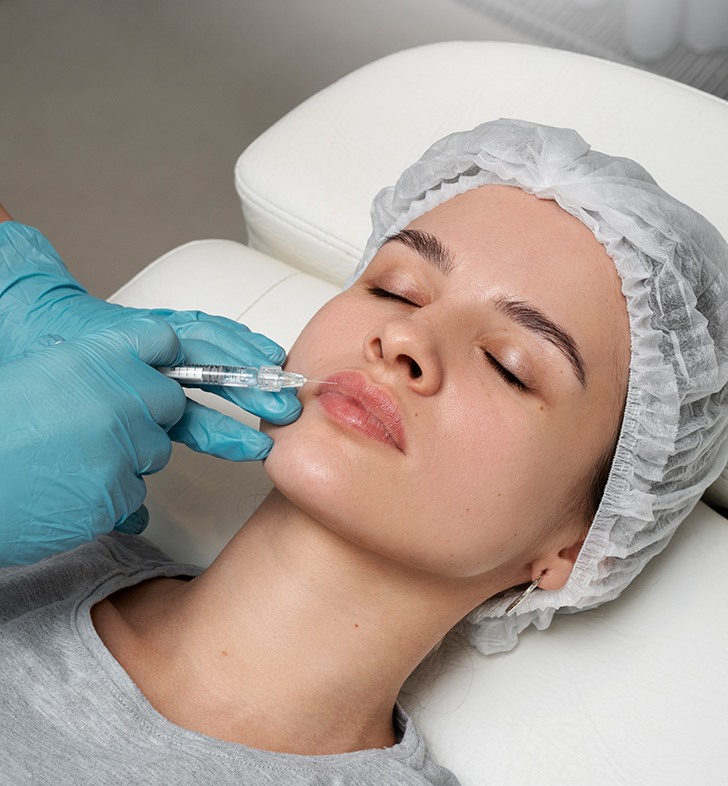
Lip Fillers
Why are lip fillers used?
Lip fillers restore or add volume to your lips. They don’t
stop the aging process, but they might help delay the need for a more invasive
surgical lip augmentation, like lip implants or a lip lift. They can also help
you achieve a desired look, which boosts your self-esteem.
Over time, you may lose volume in your lips, which may be a
result of:
Genetics.
Smoking.
Sun damage.
How common are lip filler procedures?
Lip filler procedures are common. In 2018, healthcare
providers performed over 2.1 million lip filler procedures.
How long do lip fillers last?
Lip fillers typically last 12 to 18 months. However, it
depends on your age and how fast your body breaks down calories into energy
(metabolism). Younger people tend to burn calories faster, so lip fillers don’t
last as long.
What happens before a lip filler procedure?
The U.S. Food and Drug Administration (FDA) hasn’t approved
the use of lip fillers in anyone under the age of 21. As a result, you must be
at least 21 years old to get FDA-approved lip fillers.
Before your lip filler procedure, you’ll meet with your
healthcare provider. They’ll assess many factors, including your mental health
and any social conditions. Your healthcare provider may ask the following
questions:
Why do you want lip fillers?
What’re your expectations?
Do you think a lot about imagined or very small defects with
your body?
Is a spouse, partner or friend encouraging you to get lip
fillers?
Your physical health and the shape of your face are also
important. Your healthcare provider will evaluate your general health,
including any preexisting health conditions or risk factors. Talk to your
healthcare provider about any allergies you have, too. And tell them about any
prescription or over-the-counter (OTC) medications that you’re taking,
including herbal supplements.
Your healthcare provider will examine and measure your face.
They’ll also take photographs of your face and lips for your medical record.
When considering the size of your lips, it’s important to
imagine how you’ll look. Think about getting a new haircut. You may show your
hairstylist a photograph to give them an idea of how you’d like your hair to
look. However, your hairstylist might tell you that your hair won’t look like
the photograph because of your hair texture, hairline, volume or length. You
may want your lips to look like a celebrity’s lips, but it might not be
achievable because your face shape and features are unique. Ask your healthcare
provider if bringing in a picture is helpful. But be prepared to thoroughly
describe what you want your lips to look like if your healthcare provider
doesn’t want to reference a photograph.
What happens during a lip filler procedure?
During a lip filler procedure, your healthcare provider will
apply a topical anesthetic to your lips. The topical anesthetic will numb your
lips so you won’t feel any pain and the process is as comfortable as possible.
The numbing creams often consist of benzocaine, lidocaine and tetracaine (BLT).
About 15 to 30 minutes later, your lips should be numb.
If you have a BLT allergy, your healthcare provider may give
you a nerve block injection to numb your lips. About 15 to 30 minutes after the
injection, your lips should be numb.
Your healthcare provider will then use a thin needle to
inject lip filler into any or all parts of your lips, including the edges of
your lips (vermillion border), the curve in the center of your upper lip
(Cupid’s bow) and your oral commissures (corners of your mouth). You won’t feel
any pain, but you may feel a pinching sensation, and your eyes may water. On
average, your healthcare provider will insert 1 milliliter (mL) of lip filler
into your lips, which is about one-fifth of a teaspoon. The needle won’t go
deeper than 2.5 millimeters (mm) into your skin.
Your healthcare provider may apply an ice pack to your lips
throughout the procedure to minimize swelling and bruising.
The entire procedure may take as little as 30 minutes or as
long as two hours.
What happens after a lip filler procedure?
After the procedure is complete, your healthcare provider
may gently massage your lips so that they absorb the filler. They may continue
to ice your lips as well.
Your healthcare provider will monitor you for up to 15
minutes to ensure you don’t experience any side effects, including dizziness,
nausea or substantial bleeding. Once they determine that you no longer require
monitoring, they’ll let you go home (discharge you). A local anesthetic won’t
make you tired or groggy, so you can drive yourself home. However, you may want
to have a family member or friend drive you home just in case.
Your lips may be swollen, sensitive and bruised. Swelling usually
goes away after 24 to 48 hours, but it may take up to a week.
Your healthcare provider will also schedule a follow-up
appointment about two weeks after the procedure to monitor your lips. They may
take another picture for your medical record so you can see what your lips
looked like before the procedure and after they’ve healed.
The following tips will help your lips as they heal:
Apply an ice pack for up to 10 minutes to reduce
inflammation, pain and swelling.
Avoid wearing lipstick, lip balm or any other product on
your lips for at least 24 hours.
Refrain from touching or puckering your lips, including
kissing and sipping from a straw.
Be careful brushing your teeth.
Drink plenty of water.
Avoid exercising for at least 24 hours.